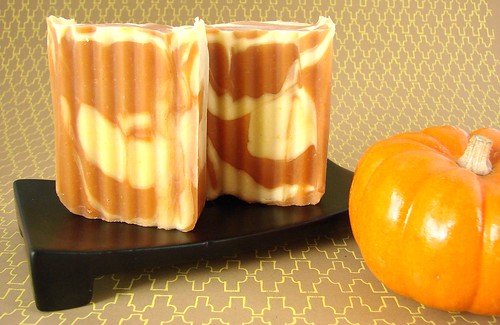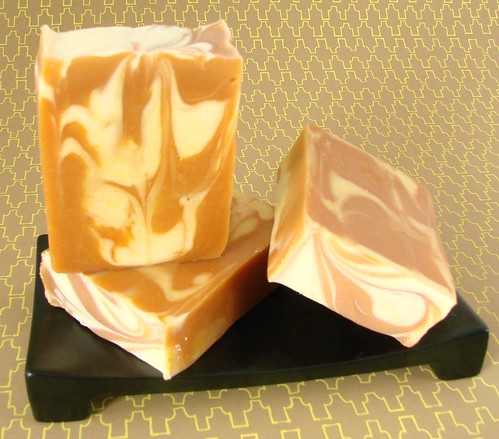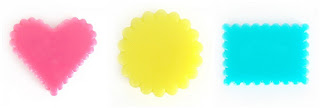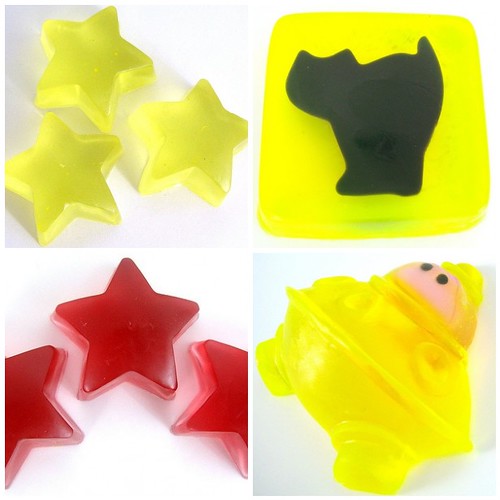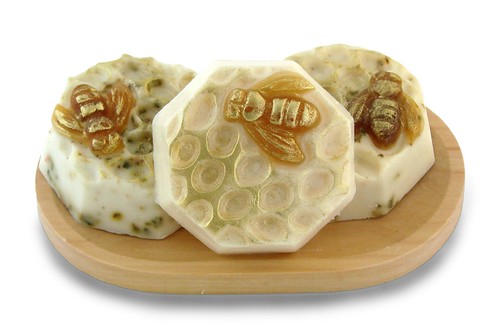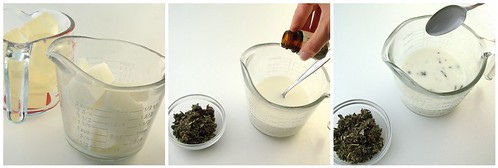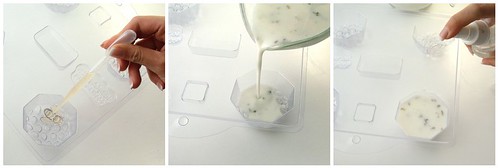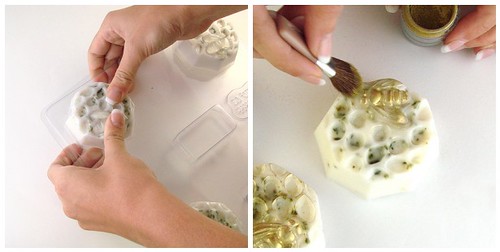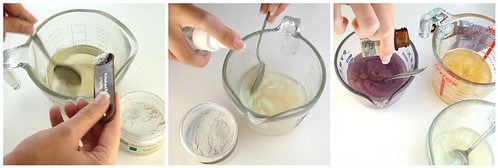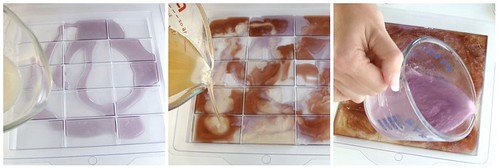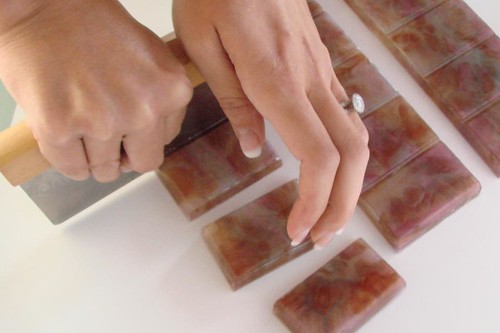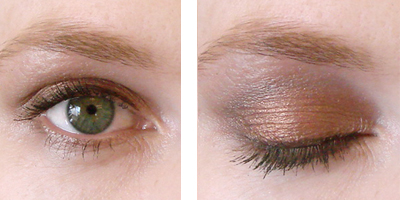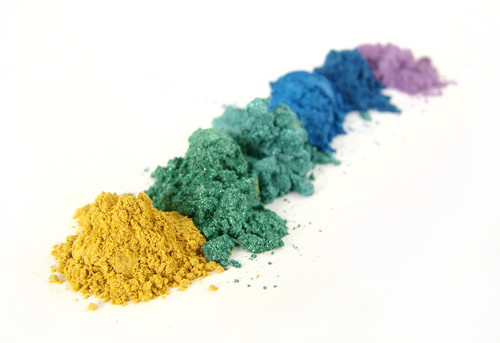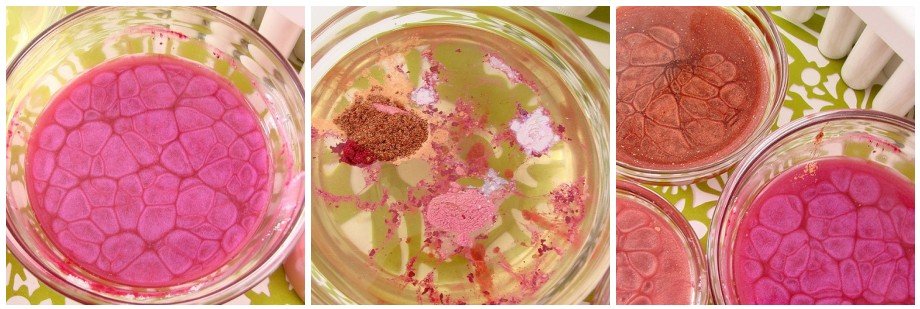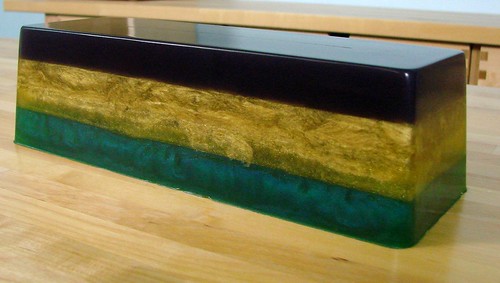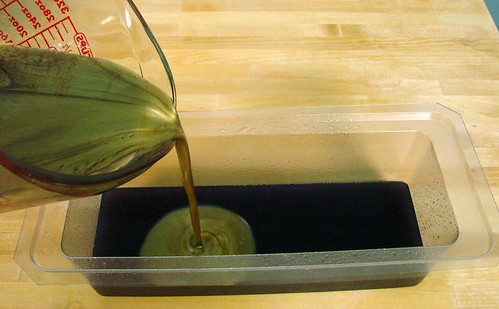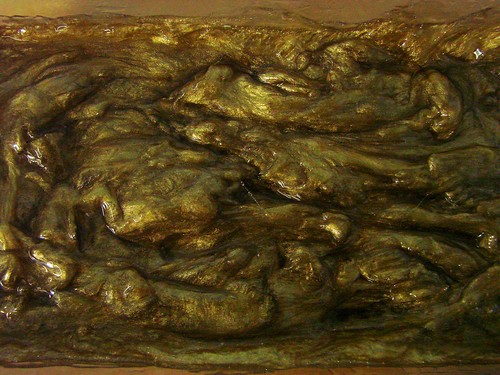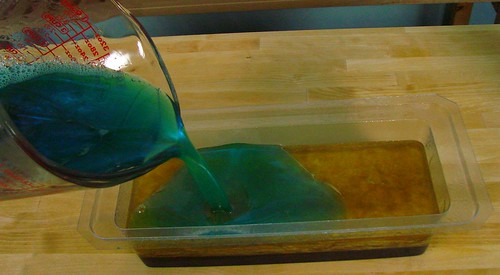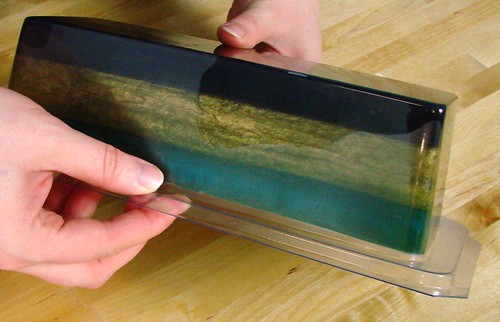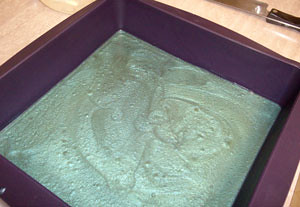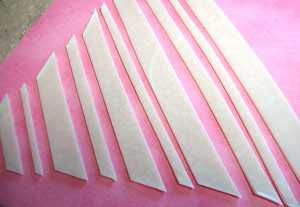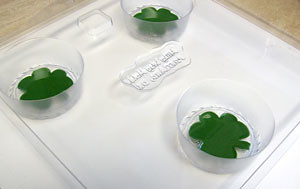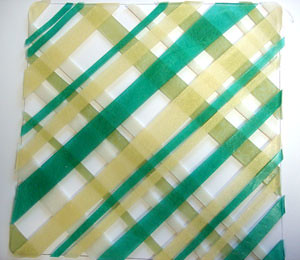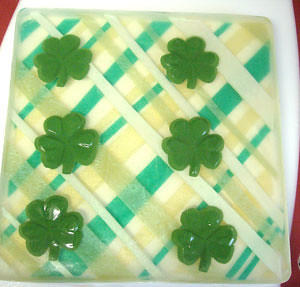Treat (don’t trick) your skin this chilly fall season with a handmade, moisturizing and delicious smelling soap with real pumpkin puree. Pumpkin is full of antioxidants and vitamins A and C which can help keep your skin youthful and refreshed!
16 oz. Coconut Oil
16 oz. Palm Oil
16 oz. Olive Oil
2 oz. Castor Oil
15 oz. water
7.4 oz. lye
3 oz. pumpkin puree
3 oz. Pumpkin Spice Fragrance Oil
Titanium Dioxide
Copper Sparkle Mica
Mixing Spoons
Ladle or glass mug
3 large glass, plastic or stainless steal mixing bowls
(never use aluminum or a reactive material when mixing cold process soap)
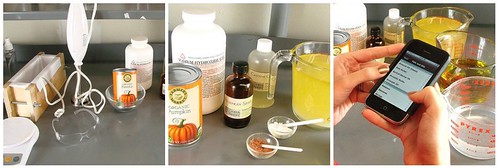 Preparation: Make sure you have all of your ingredients with in reach (I even double checked our recipe on the iPhone Lye Application). Then line your mold with Freezer Paper (click here for instructions on lining your soap mold). Most importantly review lye safety guidelines.
Preparation: Make sure you have all of your ingredients with in reach (I even double checked our recipe on the iPhone Lye Application). Then line your mold with Freezer Paper (click here for instructions on lining your soap mold). Most importantly review lye safety guidelines.
Lye Safety Tips:
- Always wear gloves & goggles (glasses are not enough, goggles)
- Measure out distilled water & slowly pour and stir lye into water
- Do not breathe in lye fumes; work in a well ventilated room
- Keep small children and animals out and away from your soapmaking
- Protect your workspace with newspaper or cardboard
- Lye corrodes metal so remove jewelry before making soap
- Lye in the eyes = trip to emergency room
- Lye on your skin = flush with water (some soapmaker’s swear by vinegar instead of water).
- Soap utensils are for soap. Food utensils are for food. Never the twain should meet.
- Soap needs to cure, undisturbed, from either pets or small children
- Soap molds need to be either lined with wax paper or be made from a flexible plastic.
- Never make soap in a glass or aluminum mold.
ONE: Weigh and combine your Coconut Oil, Palm Oil, Olive Oil and Caster Oil. Make sure all of the oils are in liquid form so you might need to melt the coconut and palm oil in the microwave or on the stove.
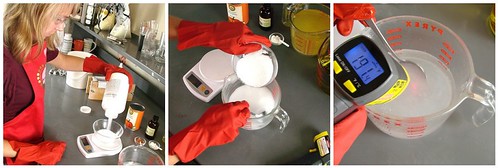 TWO: To make your lye solution, add 7.4 ounces of lye to 15 ounces of distilled water (you can increase the water to 16.5 if you like a slower trace). Remember to always add the lye to the water- never add the water to the lye. Mix the lye water until the cloudiness clears and the temperature cools. The ideal temperature is between 125 and 135 degrees though some soapers soap all the way down to room temperature lye. I like 125 personally. Notice the water heats all the way up to 191 degrees when combined with the water and lye. Gloves and goggles stay on for the ENTIRE soapmaking process.
TWO: To make your lye solution, add 7.4 ounces of lye to 15 ounces of distilled water (you can increase the water to 16.5 if you like a slower trace). Remember to always add the lye to the water- never add the water to the lye. Mix the lye water until the cloudiness clears and the temperature cools. The ideal temperature is between 125 and 135 degrees though some soapers soap all the way down to room temperature lye. I like 125 personally. Notice the water heats all the way up to 191 degrees when combined with the water and lye. Gloves and goggles stay on for the ENTIRE soapmaking process.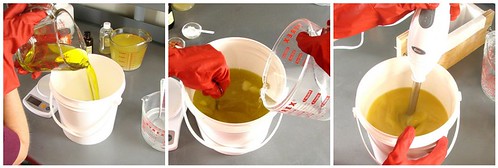 THREE:Once your oils are combined and their temperature stabilized under 135 degrees and your lye water has reached 125-135 degrees, slowly pour the lye water into your oils stirring at all times. Then stick blend the oil and lye mixture (approximately 2-3 minutes). Turn the stick blender on and off, making sure to mix the entire mixture thoroughly (up down, side to side, around and around).FOUR: Once your mixture has reached light *trace, stick blend in 3 oz of pumpkin puree. Then separate the mixture into two different containers- 2/3 in one bowl and 1/3 in the other.*Trace looks like thin pudding where faint trailings of soap stay on the surface of your soap mixture when lightly drizzled from a few inches overhead.
THREE:Once your oils are combined and their temperature stabilized under 135 degrees and your lye water has reached 125-135 degrees, slowly pour the lye water into your oils stirring at all times. Then stick blend the oil and lye mixture (approximately 2-3 minutes). Turn the stick blender on and off, making sure to mix the entire mixture thoroughly (up down, side to side, around and around).FOUR: Once your mixture has reached light *trace, stick blend in 3 oz of pumpkin puree. Then separate the mixture into two different containers- 2/3 in one bowl and 1/3 in the other.*Trace looks like thin pudding where faint trailings of soap stay on the surface of your soap mixture when lightly drizzled from a few inches overhead.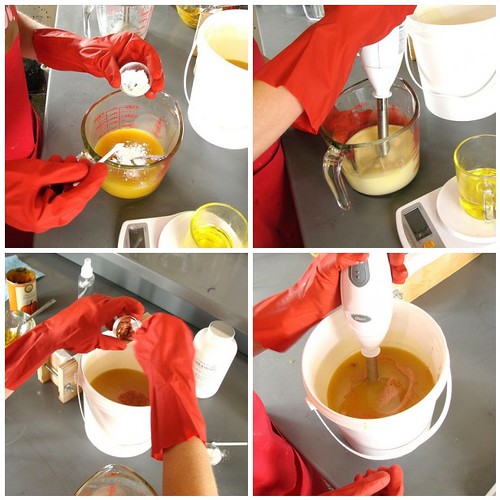 FIVE: Add up to a full Tablespoon of titanium dioxide to the container with 1/3 of the soap and mix with your stick blender. This will keep make a lovely light contrast color.
FIVE: Add up to a full Tablespoon of titanium dioxide to the container with 1/3 of the soap and mix with your stick blender. This will keep make a lovely light contrast color.
SIX: To the second container, add 1 Tablespoon of Copper Sparkle mica and use a stick blender to mix well. This will make a beautifully dark and rich pumpkin color.
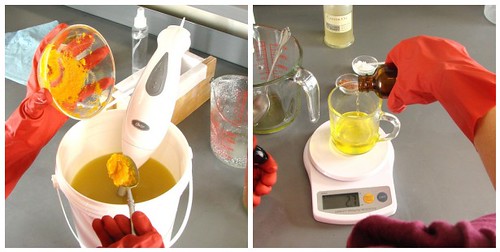 SEVEN: Once the Copper Sparkle mica is fully incorporated, stir in 3 oz of Pumpkin Spice Fragrance Oil by hand. This fragrance slightly accelerates trace so be ready to pour once your fragrance is mixed in.
SEVEN: Once the Copper Sparkle mica is fully incorporated, stir in 3 oz of Pumpkin Spice Fragrance Oil by hand. This fragrance slightly accelerates trace so be ready to pour once your fragrance is mixed in.
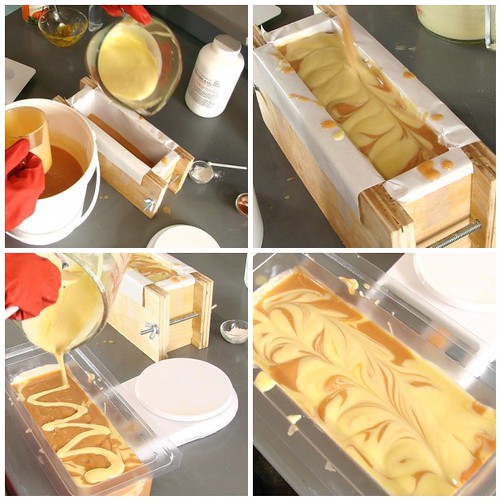 EIGHT: In your mold, pour in 6 ounces of the light colored soap followed by approximately 10 ounces of the darker colored soap. The pours do not have to be exactly 6 or 10 ounces – just eyeball it. Make sure you pour two layers of each soap base, alternating colors. Once your mold is filled to the top, swirl the soap with a spoon, spatula or chopstick. Repeat this step using the clear plastic mold. Your gloves and goggles stay on for the entire soapmaking process, even during the swirling part.
EIGHT: In your mold, pour in 6 ounces of the light colored soap followed by approximately 10 ounces of the darker colored soap. The pours do not have to be exactly 6 or 10 ounces – just eyeball it. Make sure you pour two layers of each soap base, alternating colors. Once your mold is filled to the top, swirl the soap with a spoon, spatula or chopstick. Repeat this step using the clear plastic mold. Your gloves and goggles stay on for the entire soapmaking process, even during the swirling part.
